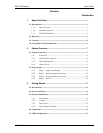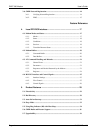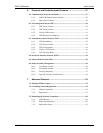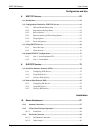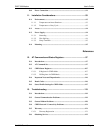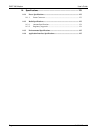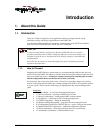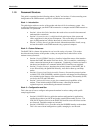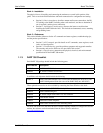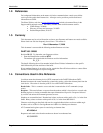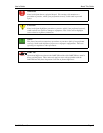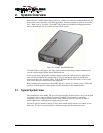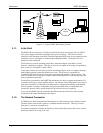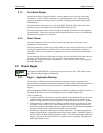
Introduction DART 300 Modem
Page 2 2110212 Rev 1.0
1.1.2. Document Structure
This guide is organized into the following primary “books” and sections. For those needing some
background on the CDPD network, a primer is available from our website.
Book 1 – Introduction
The guide begins with an overview of the product and where it fits in a telemetry system. Also
covered are instructions to get your DART 300 connected to a computer and the CDPD network to
confirm that it is operational.
• Section 1, About this Guide, introduces the reader to how to use this document and
understand the conventions.
• Section 2, System Overview, is a high level look at the layout of the system and
offers suggestions for the project development. This section helps you determine the
type of configuration best suited to the needs of various host devices.
• Section 3, Getting Started, provides the basic information needed to install, set-up,
and test the modem on the CDPD network using a personal computer.
Book 2 – Feature Reference
The DART 300 is a feature-rich product for use in a wide variety of systems. This section
describes the many features of the product so that you can plan how to make full use of the
modem to meet your needs.
• Section 4, Local DTE/DCE Interface, describes in detail the nature of the interface
between the DART 300 and the local host device. This is essential to establishing a
robust connection between the two components. Terminology of modes and states is
introduced, and both the AT command and the RS-232 interfaces are explained.
• Section 5, Product Features, introduces the primary features of the DART 300. It
covers Friends Only, the Quick Dial Directory, Auto-dial on Start-up, and Sleep
modes.
• Section 6, Protocols and Packet Assembly Features, discusses the protocol options
available (TCP, UDP, SLIP/PPP), and their respective advantages and disadvantages.
Also included are the features of the internal Packet Assembly / Disassembly (PAD)
service for the TCP and UDP stacks.
• Section 7, Advanced Features, covers less commonly used capabilities of the
modem. These include multiple CDPD accounts, controlling the network
registration process, and monitoring the network connection.
Book 3 – Configuration and Use
This is the core of how to configure and operate the modem in various settings with specific
example applications.
• Section 8, UDP/TCP Service, guides the modem configuration for applications
needing the modem to provide IP and packet assembly/disassembly services. The
UDP and TCP packet services in the DART 300 for both server and client sessions
are discussed. Detailed examples are included.
• Section 9, SLIP/PPP Service, describes using the SLIP/PPP interface to the modem.
This is for users with an intelligent host system, managing its own IP stack.




